2024 Hyundai Santa Fe “a significant departure ” says chief designer
CarNews
SangYup Lee finds inspiration for automotive design in everything from a bird’s tail to art exhibitions, factories, and architects. For the redesigned 2024 Hyundai Santa Fe, he listened and learned from a parking lot.
“Costco was definitely a source of design inspiration for me,” the head of Genesis and Hyundai’s global design center admitted in an interview with Motor Authority during the unveiling of the 2024 Hyundai Santa Fe in, where else, Santa Fe, New Mexico. “It’s unbelievable how big the parking lot is, you see thousands of cars over there. First thing that I question is what the heck am I supposed to do to make our car very special and be loved by customers when they have so many choices.”
For the Santa Fe, it meant leaning into big data to forecast trends four years ago, prior to the pandemic. The award-winning designer interpreted data’s obvious prediction of “outdoor lifestyle” with a bigger, boxier, blockier take on the otherwise (sub)urbane Santa Fe mid-size crossover.
The result is a modern take on classic SUV cues, with as much Ford Bronco and Land Rover Defender as Lego truck. With its boxed ends, flat roof, vertical tailgate, flexed wheel arches, and unique H-shaped light signature, the fifth-generation Santa Fe looks nothing like its predecessors, dating back to when it launched new in 2001.

“This is quite a significant departure for Santa Fe,” Lee said.
It’s about six inches shorter in length than the Palisade, the brand’s largest three-row SUV, but bigger than its predecessor in most dimensions. The new Santa Fe stretches 1.8 inches longer to 190.2 inches, and the wheelbase extends nearly two inches longer, to better fit a more functional third row than when Hyundai tried it with the third-generation Santa Fe. At 67.7 inches, it’s 1.4 inches taller than before though the ground clearance remains the same at 8.2 inches.
To the naked eye, it’s surprising that it’s the same width. It looks so much more muscular, in part from the square corners and 21-inch wheels (18s will be standard when it goes on sale in January 2024), as well as from the front axle and its bulging fenders being pushed more to the front for shorter overhangs.
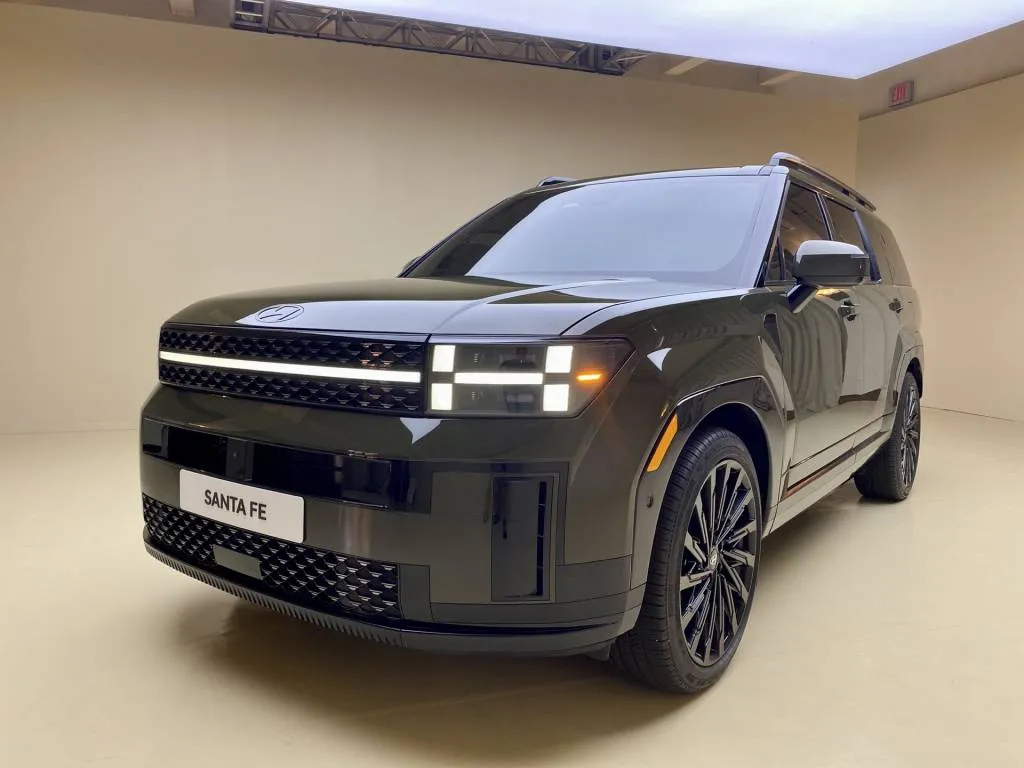
2024 Hyundai Santa Fe

2024 Hyundai Santa Fe
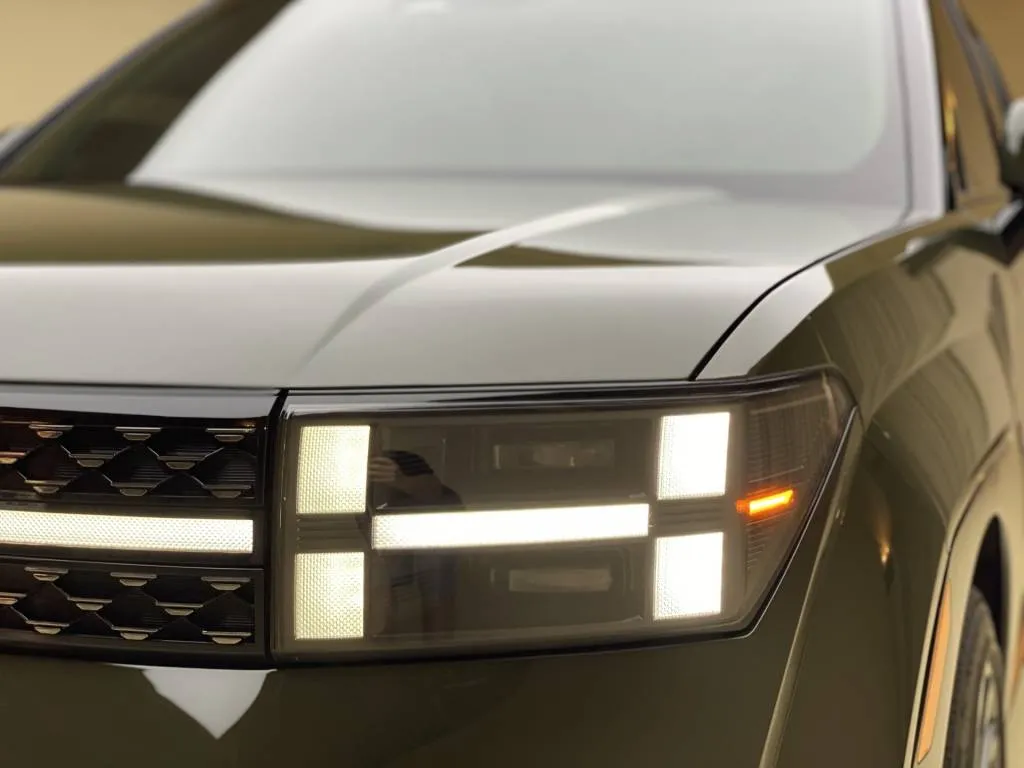
2024 Hyundai Santa Fe
The most obvious mark of distinction is the H-shaped LED running lights that brand the face like a cattle iron. The vertical bars of the H seem to run into the crease of the hood. The horizontal bar extends into a light bar spanning the upper grille. Between that and the lower grille rests an elongated dumbbell in the shape of an H, housing active grille shutters and bookended by side air intakes.
“I’m very proud of the attention to details, in the tailgate, the lift handle, the gray zone step,” Lee said.
The lift handle hides in the C-pillar to help you step up on the door sills to load and strap items to the roof rack. The pillars are covered in gloss black, and it looks as if the greenhouse is one big pair of wraparound sunglasses. That’s reflected down low on the arches and rockers, where gloss black plastic holds up better over time than rubber cladding, Lee explained, and if it gets chipped it’s easier to replace than body color panels.
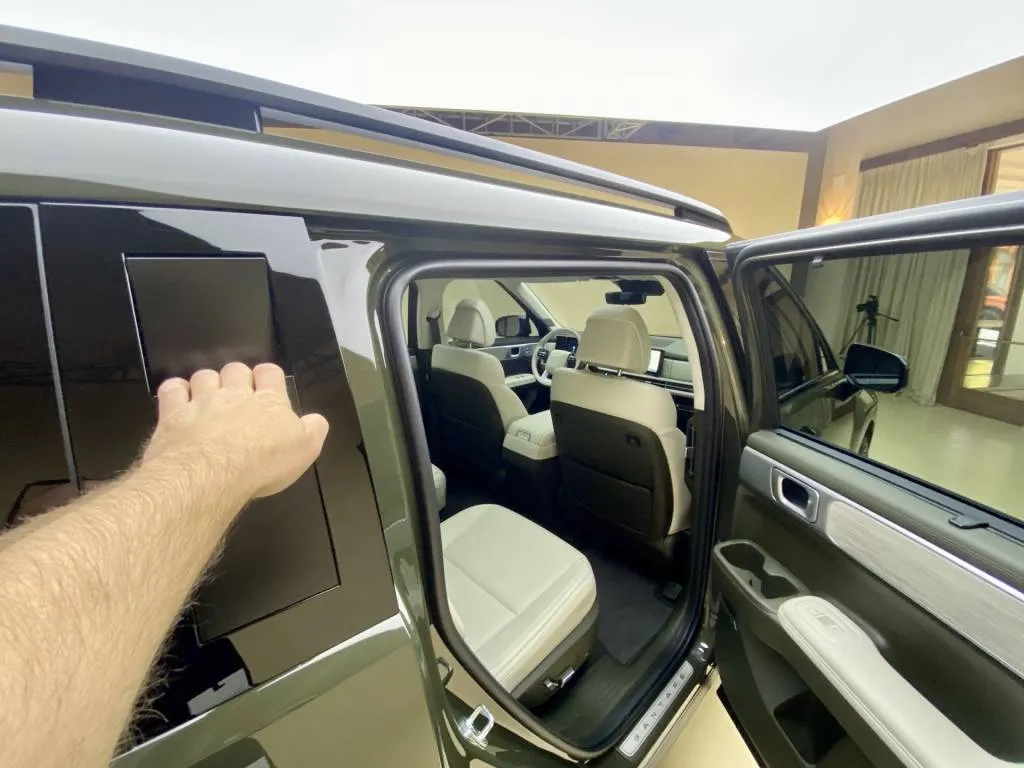
2024 Hyundai Santa Fe
What lies under the hood and within those wheel wells might be the most disappointing thing about the 2024 Santa Fe, on paper. At launch it will be offered with a 277-hp 2.5-liter turbo-4 with an 8-speed dual-clutch automatic, or a 1.6-liter turbo-4 hybrid powertrain with an estimated output of 226 hp. Hyundai engineers said they tweaked the carryover engines to improve cooling and friction efficiencies to meet more stringent particulate emissions regulations. The North America market will likely get the plug-in hybrid offered overseas and on the 2023 Hyundai Santa Fe, but we’ll find out for sure at the Los Angeles auto show in mid-November.
We expect Hyundai to launch the XRT Concept it showed off in early August as a production model in L.A. as well. Suspension changes to the other grades remain minimal. Hyundai said it swapped in hydraulic bushings instead of rubber ones, and its next-gen shocks have better damping. Hyundai North America engineers couldn’t speak to drive modes, but confirmed all-wheel-drive models will still have a center locking differential.

Hyundai Santa Fe XRT Concept
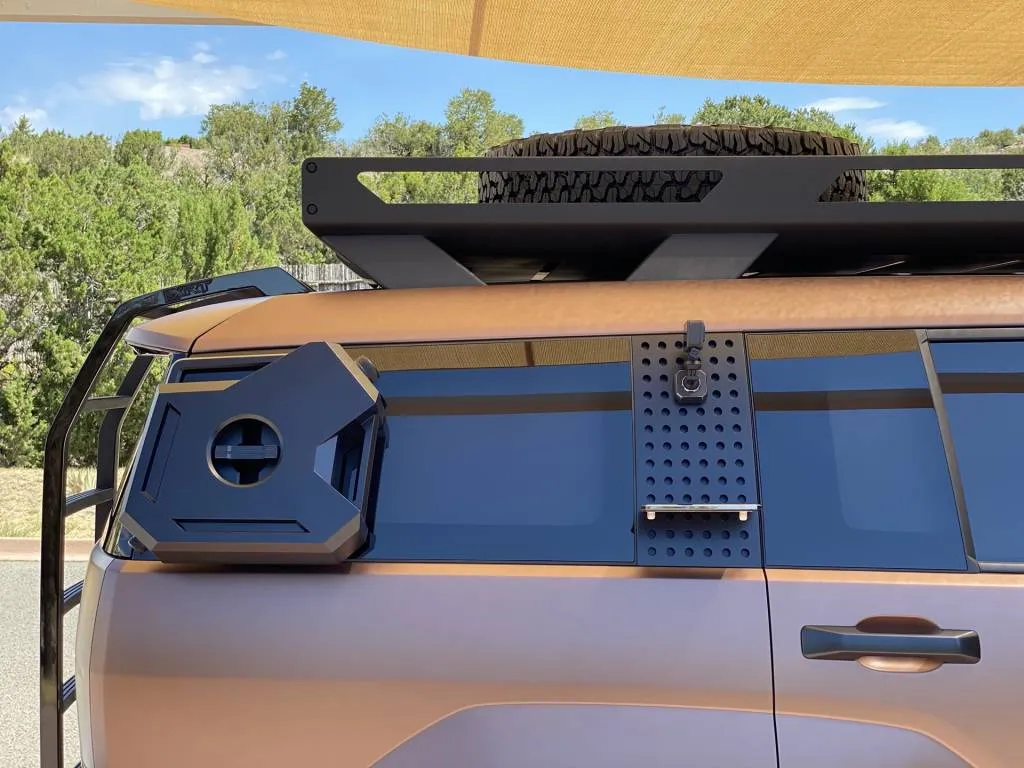
Hyundai Santa Fe XRT Concept

Hyundai Santa Fe XRT Concept
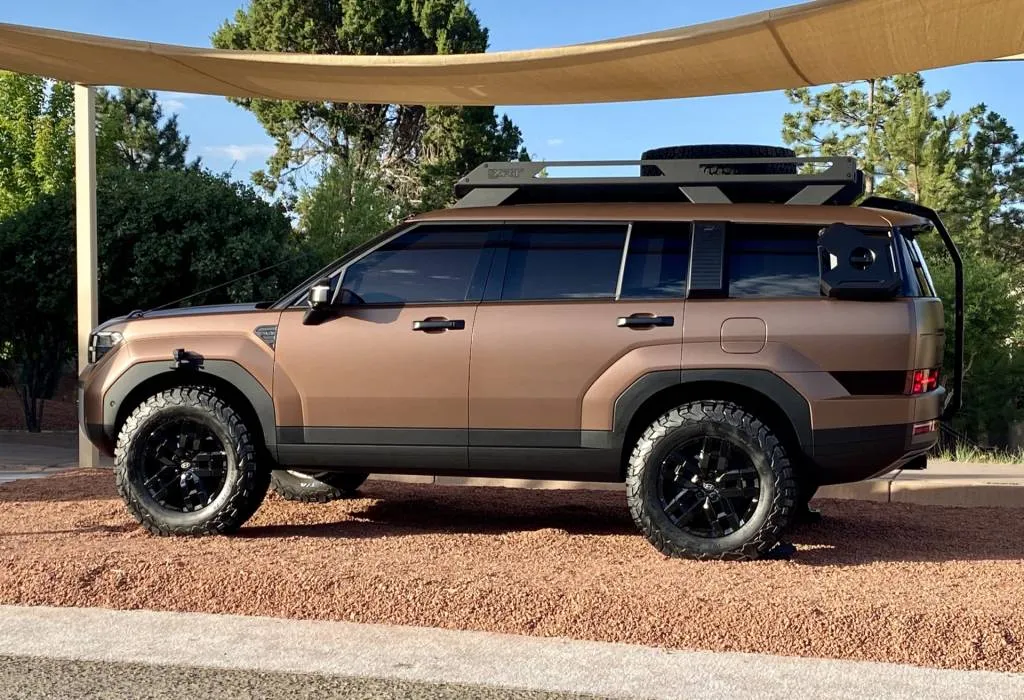
Hyundai Santa Fe XRT Concept
Efficiency is as important a keyword as “outdoor lifestyle.” John Robb, the president of Hyundai America Technical Center, said the development of electric vehicles such as the Ioniq 5 hatchback and Ioniq 6 sedan taught engineers how to lower the coefficient of drag of the Santa Fe despite its blockier shape, from 0.33 to 0.29.
Those vehicles, as well as the recent crop of Genesis EVs, have been heralded as design knockouts throughout the automotive industry. It’s one reason why Lee was the 2023 World Car Person of the Year, preceded the year before by his mentor and “great friend,” Luc Donckerwolke, president and chief creative officer of Hyundai Motor Group.
“It’s not a typical corporate relationship, not like boss and employee or anything like that,” Lee said with an appreciative smile. “We are designers that challenge each other. We’re great friends, he is also my great mentor, and made me where I am.”
Prior to following the venerated Donckerwolke from Volkswagen Group to Hyundai and Genesis in 2016, Lee worked with him at Bentley, designing the Bentayga, Flying Spur, and stunning EXP 10 Speed Concept.
But Lee had already established himself as one of the automotive world’s foremost designers, spanning 15 brands over 25 years, starting with General Motors and the fifth-gen Chevy Camaro, then concept cars such as the Stingray Corvette that starred as Sideswipe in the second Transformers movie, “Revenge of the Fallen.”
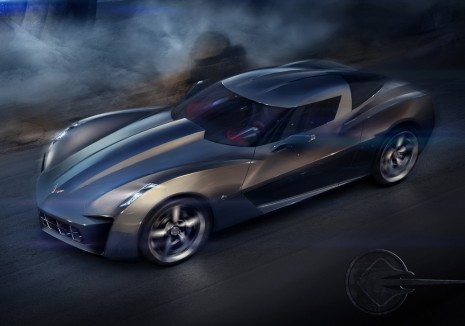
2009 Chevrolet Corvette Stingray Concept
“Lee has proven himself as one of the world’s best automobile designers in the global platform,” Donckerwolke said on the hiring of Lee to Hyundai in 2016.
Arguably, the dynamic design duo have done their best work elevating the Hyundai and Genesis brands. When asked if Lee felt more creative freedom working with the Belgian native, he said, “Absolutely.”
“Luc always comes with ideas, I always come with ideas, and the best idea is always created when Luc and myself are talking together,” Lee said. “When we talk we are not talking about all the big corporation things, we’re only talking about design in our main priority to deliver the best product.”
That relationship could have a downside, particularly in social situations between the two families that Lee described as very close.
“One time, I had dinner with Luc and his wife Melinda, and we’re talking like nonstop for a half hour,” Lee said. “And Melinda says, “Luc you should have married SangYup.” And Luc says, “Melinda, I like SangYup but not that much.”
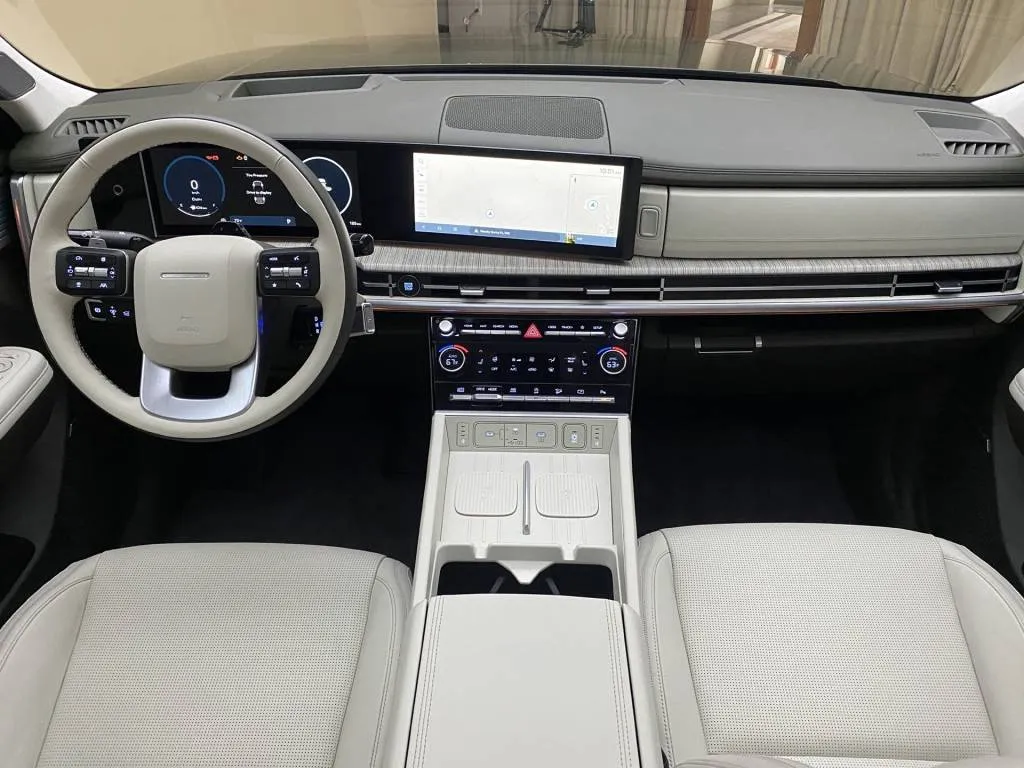
2024 Hyundai Santa Fe

2024 Hyundai Santa Fe
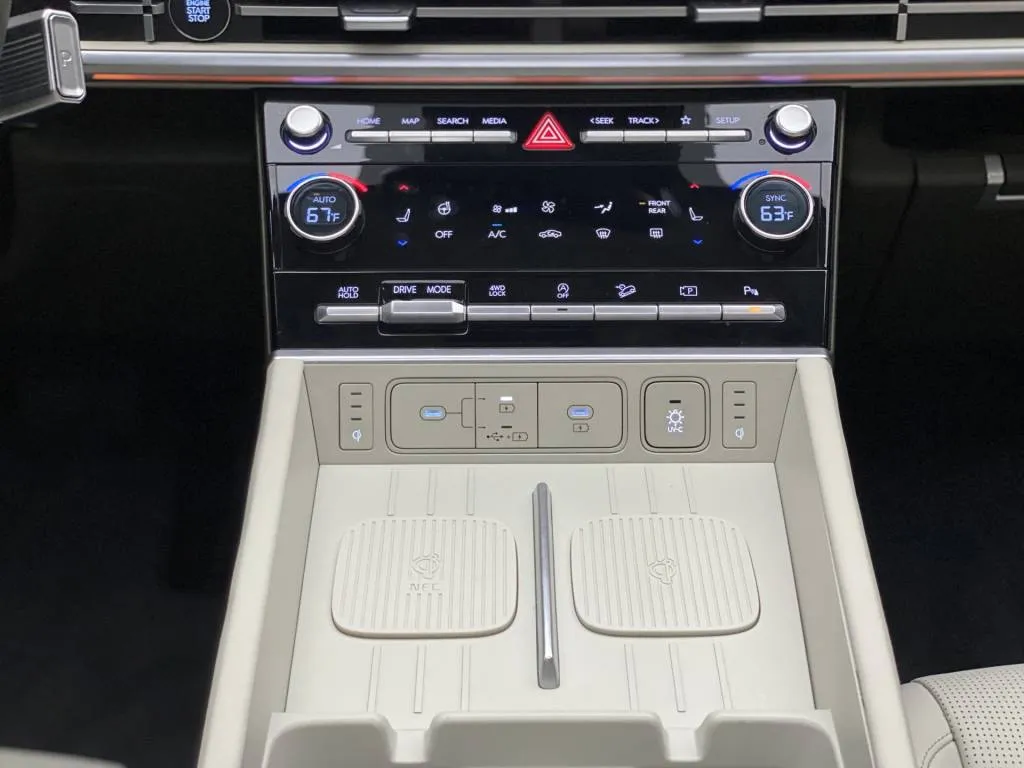
2024 Hyundai Santa Fe
The pairing works best here on the thoughtful interior of the Santa Fe. The broad modular look carries over inside, where the latest tech blends instead of overwhelms classic style elements appropriated from luxury cars. Twin 12.3-inch displays curve toward the driver, and a dash decked in available wood trim snakes from end to end, underscored by a belly of metallic vents. The front passenger faces dual glove boxes split by a hidden storage shelf.
The pairing of form and function continues to the center console. Hyundai moved the electronic gear shifter to the steering column, same as in the Ioniq 5 electric crossover, to open up a tiered console topped by two wireless phone charges and a UV sanitizer. Bands of drive mode and climate buttons limit overreliance on the screens, even though the climate panel is another touchscreen with actual climate knobs. The deep armrest console opens from the front or back, and a storage tray slides out of the bottom for second-row riders to stow other items.
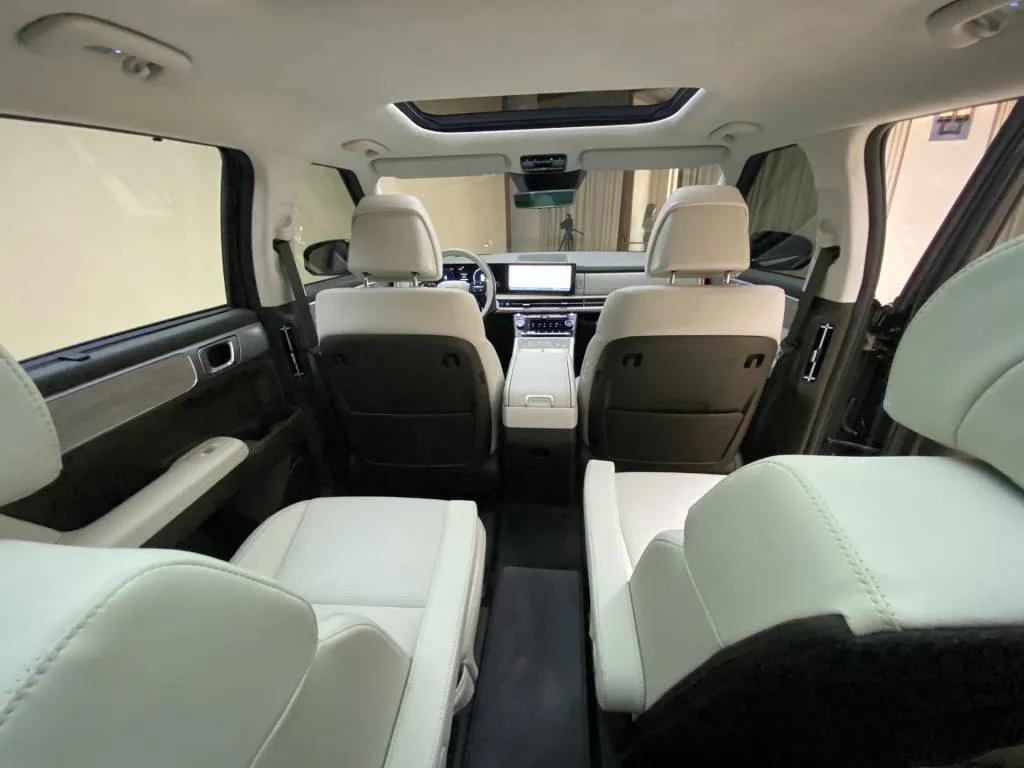
2024 Hyundai Santa Fe
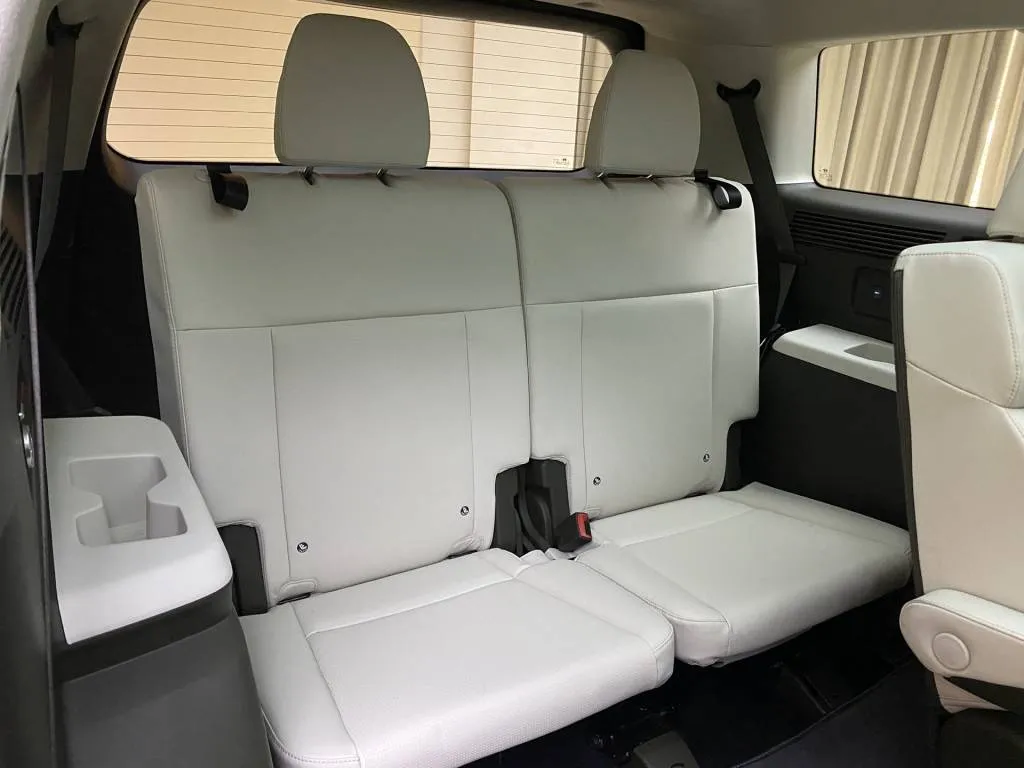
2024 Hyundai Santa Fe

2024 Hyundai Santa Fe
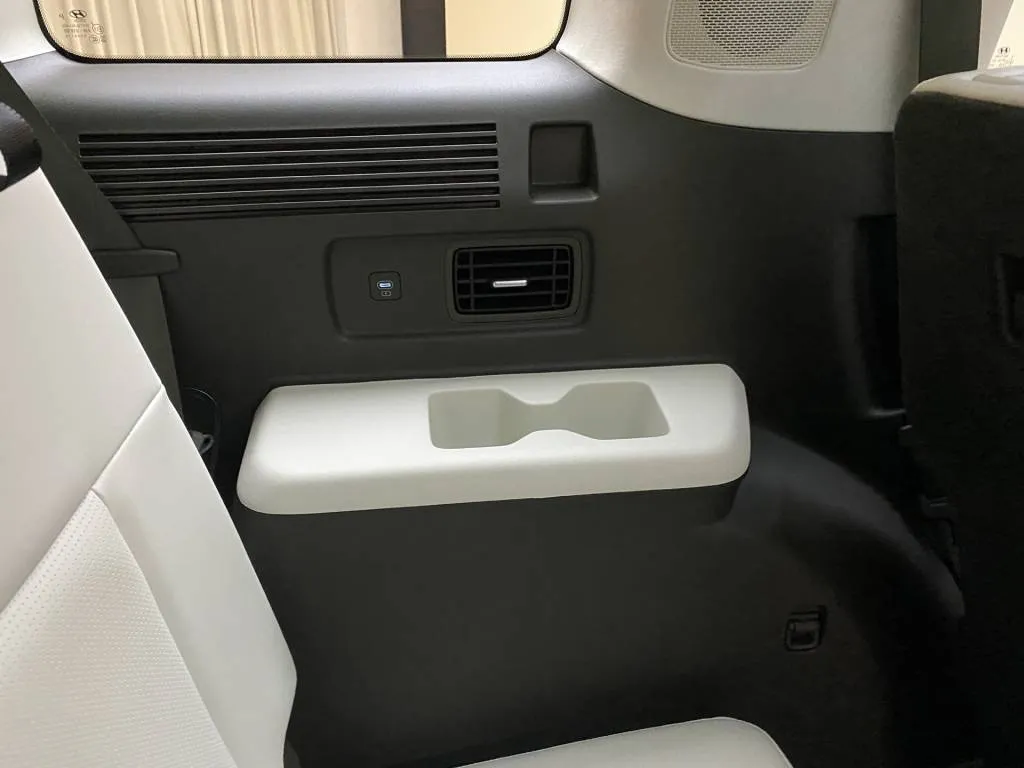
2024 Hyundai Santa Fe
The third row may be larger than the 2018 model, but with just 30 inches of legroom there needs to be some bargaining with second-row passengers to move up their captain’s chairs for six people to fit. The 50/50-split third row reclines up to 10 degrees into a large cargo hold, capable of 25.6 cubic feet of storage.
The attention to detail marries form and function back here, too. Hinged deep within the flat roof sits Hyundai’s largest tailgate and a massive opening. Long and thin struts extend vertically up the sides of the opening. The taillights are mounted low near the bumper to allow for this, and the gate opens to slightly more than an even angle with the roof, allowing those about 6-foot-2 and under to stand under it without ducking.

2024 Hyundai Santa Fe
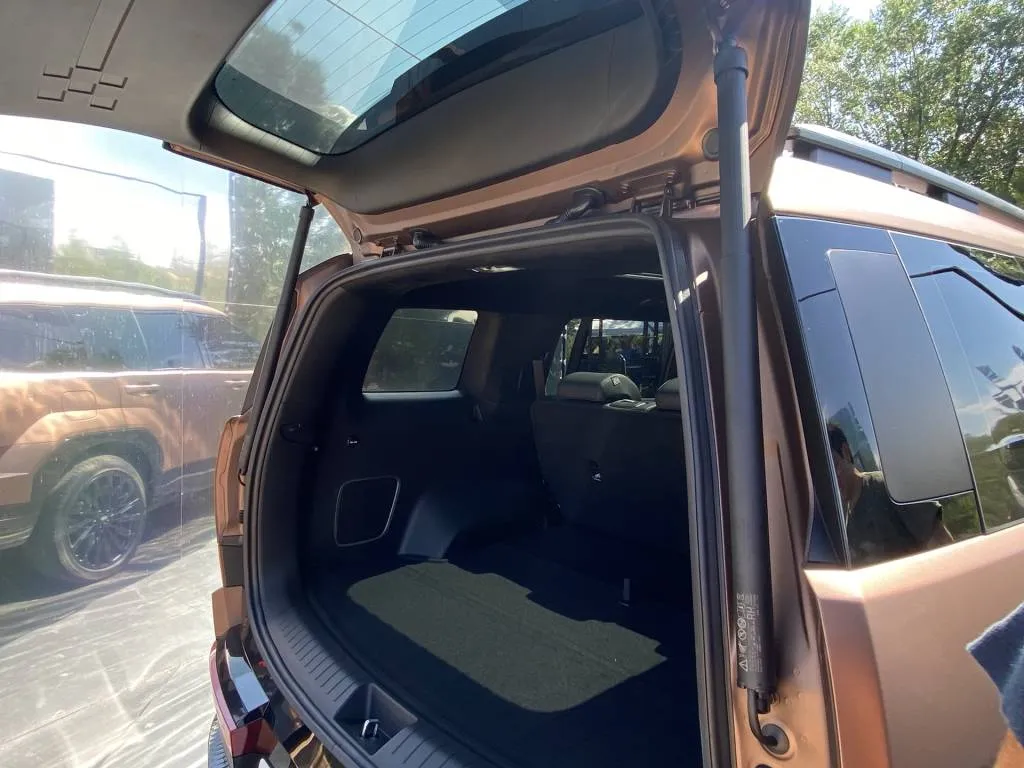
2024 Hyundai Santa Fe

2024 Hyundai Santa Fe
It should be no surprise that Costco served as the inspiration for such a wide, tall opening.
“I discovered by how a customer exits the vehicle to answer how to do the design, how they carry their shopping cart and load the stuff inside the vehicle, how they access through the rear door, how the mom and kids might access the child seat,” Lee said. “And I thought maybe I should open up the gray zone a little bit for easier access to it. A mid-size SUV is a family car. When it comes to a family car, high tech is important, but it has to be easy to use.”
That’s a universal design element that stands the test of time.
Hyundai provided airfare and lodging for Motor Authority to bring you this report.







